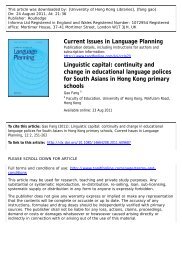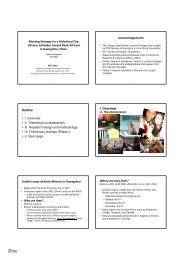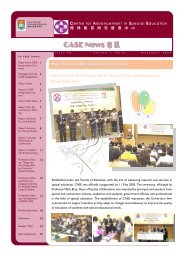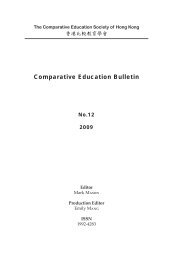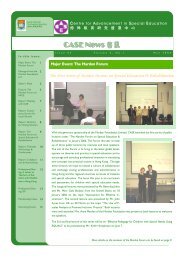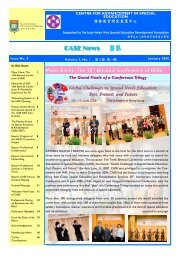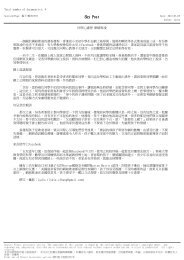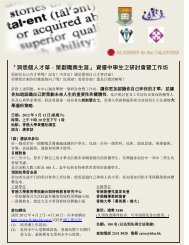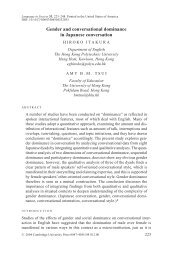Do Secondary L2 Writers Benefit from Peer Comments?
Do Secondary L2 Writers Benefit from Peer Comments?
Do Secondary L2 Writers Benefit from Peer Comments?
You also want an ePaper? Increase the reach of your titles
YUMPU automatically turns print PDFs into web optimized ePapers that Google loves.
158 TSUI AND NG<br />
them to recall why they did or did not make the revisions. The interviews were<br />
transcribed and analyzed.<br />
DATA ANALYSIS AND FINDINGS<br />
Questionnaire Results<br />
To establish the reliability of the items pertaining to each of the four<br />
constructs, that is, students' perception of the usefulness of reading peers'<br />
writings (items 9±14), the usefulness of peers' oral comments given in peer<br />
response sessions (items 15±20), the usefulness of reading peers' written<br />
comments (items 21±26), and the usefulness of teachers' comments (items<br />
27±32), respectively, Cronbach's alpha for testing internal consistency of the<br />
items for each construct was used. The reliabilities were high, with 0.86 for<br />
reading peers' writings, 0.92 for peer response sessions, 0.90 for reading peers'<br />
written comments, and 0.79 for teachers' written comments, indicating that there<br />
is high internal consistency for each of the four constructs. Students were asked<br />
to respond on a Likert scale of six, with 1 indicating strong disagreement and 6<br />
indicating strong agreement with the statements (see Table 1 for the mean scores<br />
of these items).<br />
The overall means for the usefulness of (a) reading peers' writings was 4.14; (b)<br />
peers' response sessions, 3.54; (c) reading peers' written comments, 3.64; and (d)<br />
teacher's comments, 5.30. A comparison was made between the means of each<br />
construct in pairs to see if there were any significant differences between them.<br />
Therefore, paired t-tests for comparing the means of two variables for the same<br />
group were conducted on the means of each section and the results showed that<br />
there were significant differences at p < 0.0001 between the mean scores for (a)<br />
the usefulness of reading teachers' comments and peers' written comments<br />
(t = 5.5), (b) reading teachers' comments and the peer response sessions<br />
(t = 8.39), and (c) reading teachers' comments and reading peers'<br />
writings (t = 8.10). There were also significant differences at p < 0.05<br />
in the means scores for (a) reading peers' writings and peers' written comments<br />
(t = 2.94) and reading peers' writings and peer response sessions (t = 2.98).<br />
There was no significant difference between peer response sessions and reading<br />
peers' written comments. The results indicate that students favored teacher<br />
comments significantly more that peer comments and that they liked reading<br />
their peers' compositions significantly more than reading their written comments<br />
or getting their feedback in the oral response sessions.<br />
Two questions were asked on the extent to which students incorporated peer<br />
comments and teacher comments into their revisions (items 33±34). The mean<br />
for the former was 3.74 and for the latter was 5.33, with 6 indicating ``all the<br />
time'' and 1 indicating ``never.'' A paired t-test was conducted on the two means<br />
and the result showed that the difference was significant (t = 5.94, p < 0.0001),



